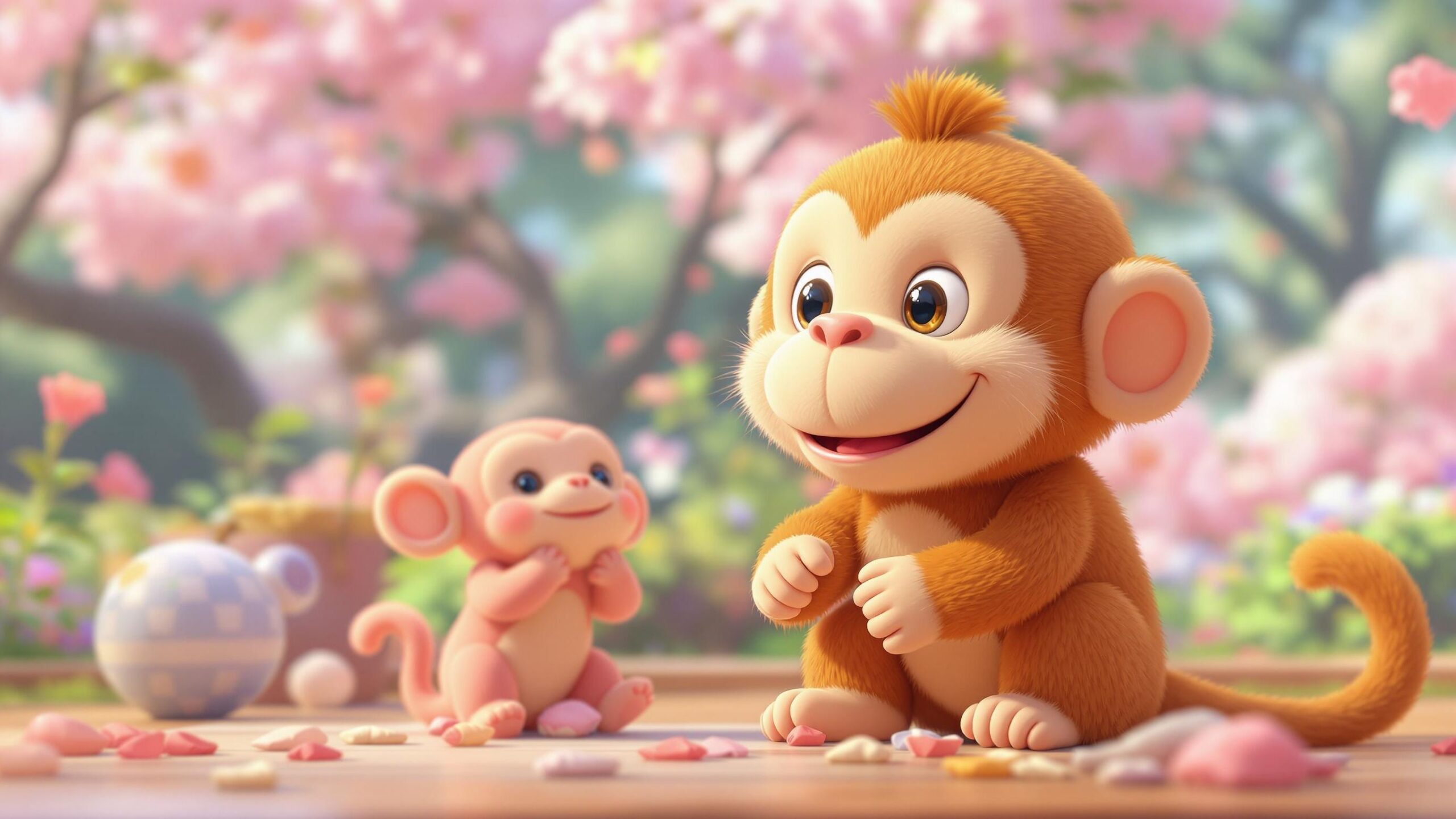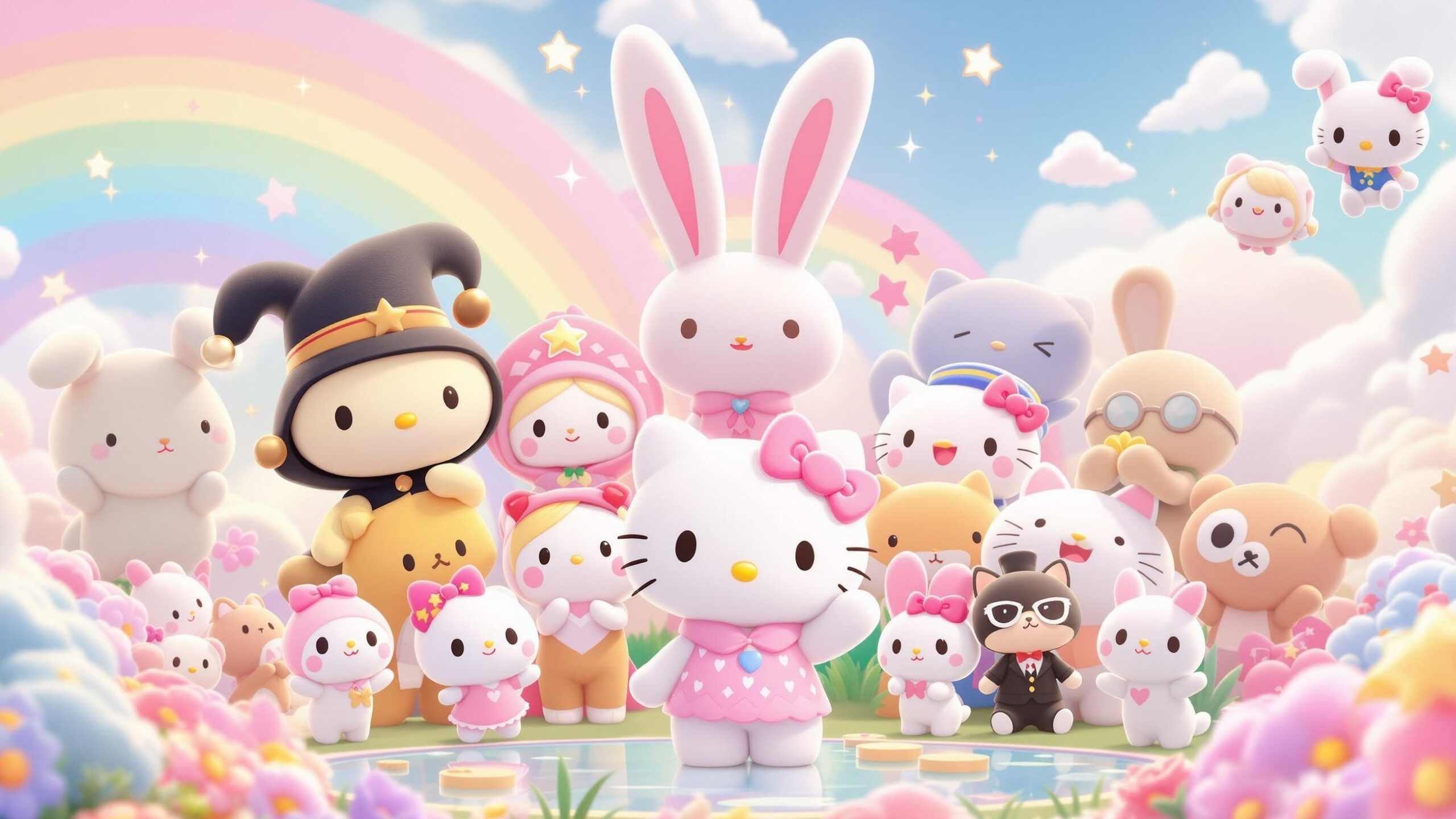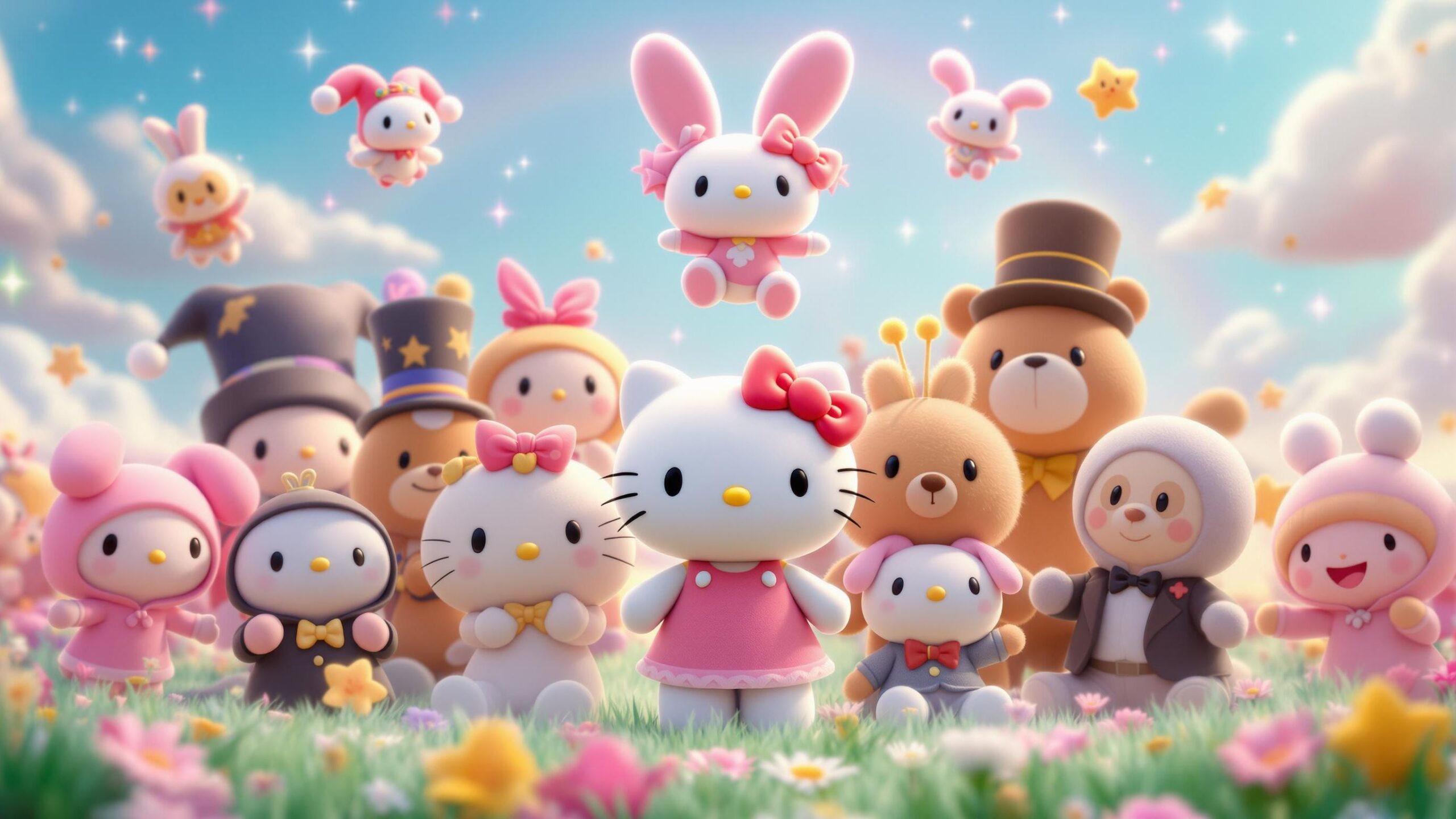In a world full of pink bows, sunshine smiles, and pastel perfection, Kuromi marches to the beat of her own drum—preferably a rock drum with skulls painted on it. She’s a little bit punk, a little bit mischief, and a whole lot of attitudes. With her jester hat, skull accessories, and unapologetic sass, Kuromi didn’t just sneak into the Sanrio lineup—she broke the mold. She’s not your typical cute character, and that’s exactly why fans have fallen head over platform boots for her. Over the years, Kuromi has gone from a supporting troublemaker in Onegai My Melody to a full-fledged icon in the world of gothic kawaii. Her look, her attitude, and her chaotic charm have carved out a space where rebellion and cuteness collide. In a culture that often expects sweetness to come in soft pink packages, Kuromi stands out like black lipstick in a sea of cherry gloss—and that’s what makes her so beloved. So how did this pointy-eared, eyebrow-raising anti-hero become one of kawaii culture’s most celebrated gothic queens? Let’s unravel the mystery.
The Perfect Blend of Cute and Chaos
Kuromi’s appeal lies in her ability to be cute and edgy—without compromising either. She rocks a punk aesthetic complete with a black jester hood and a signature pink skull, yet she’s still designed with all the softness Sanrio is known for. She has rosy cheeks, big expressive eyes, and a plush, huggable silhouette. This unexpected fusion creates a visual contradiction that fans can’t get enough of. She’s the perfect mix of sugar and spice, turning the idea of “kawaii” on its head and proving that cute doesn’t have to mean sweet and submissive.
Her chaotic energy is endearing rather than threatening. She writes in her diary, has crushes, and schemes—yes—but it’s all part of a larger, more relatable personality. Kuromi isn’t just some one-note villain or emo accessory; she’s a complex character with flaws, dreams, and a sense of humor. She might plot revenge one day and binge-watch drama shows the next, which makes her all the more real to fans who are tired of cookie-cutter characters. She’s moody, messy, and misunderstood—and we love her for it.
A Rebellious Role Model for the Nonconforming
While Hello Kitty and My Melody embrace a more traditional softness and innocence, Kuromi dares to challenge the status quo. She’s bold, assertive, and unafraid to speak her mind, making her a perfect role model for fans who don’t quite fit into the mold. In a society that often celebrates politeness over honesty, Kuromi shows that being yourself—especially when that self is a little rough around the edges—is something to be proud of.
Teenagers and young adults, especially, see Kuromi as a symbol of empowerment. She’s not afraid to be angry, emotional, or dramatic. She doesn’t apologize for taking up space or being too much. That kind of unapologetic existence resonates deeply with people navigating identity, mental health, and the pressures of growing up. Kuromi wears her feelings on her sleeve (and her scowl), offering fans a comforting sense of solidarity. She teaches us that you can be vulnerable and powerful, moody and lovable—all at once.
Goth Fashion Meets Kawaii Aesthetic
Kuromi’s fashion influence cannot be understated. She didn’t just waltz into the gothic scene—she strutted in with glitter skulls and ribbons. Her signature look has inspired countless outfits, from pastel goth ensembles to full-on J-fashion cosplay. She’s become a muse for Harajuku street fashionistas and alternative fashion lovers alike. Her influence has helped expand what it means to be “kawaii,” blending punk, goth, and emo elements into a style that’s both bold and playful.
From chokers and combat boots to oversized bows and eye-catching prints, Kuromi merchandise and inspired apparel blur the line between darkness and cuteness. Fans have embraced her aesthetic as a way to express themselves—especially those who feel alienated by more conventional expressions of femininity. Kuromi proves that darkness and delight can coexist, and that being a little spooky can still be utterly adorable.
Her Popularity in the Digital Age
Kuromi’s rise to stardom wouldn’t be complete without the internet. Social media platforms like TikTok, Instagram, and Pinterest have catapulted her to global fame. Her gif-able scowls, dramatic diary confessions, and rebellious quotes have made her the queen of reaction memes and aesthetic feeds. Whether it’s teens posting “Kuromi-core” outfits or creators sharing their goth room décor, Kuromi’s presence online is loud, proud, and impossible to ignore.
She resonates with the same demographic that grew up loving alternative Tumblr aesthetics and scene-kid vibes. Kuromi fits perfectly into a digital world where self-expression is queen and identity is curated through images, playlists, and fashion. And with Sanrio smartly adapting to the times by producing themed collabs and digital stickers, Kuromi continues to reign in the ever-evolving world of internet culture.
Not Just the Rival—The Star
Kuromi may have started as My Melody’s rival in Onegai My Melody, but fans quickly realized she was more than just an antagonist. She’s smart, stylish, and charismatic—even when she’s plotting minor chaos. Over time, she became a breakout character whose popularity rivaled the main stars. Fans didn’t just want more of Kuromi—they needed it.
What makes Kuromi stand out from the typical “mean girl” trope is that she has depth. She’s not cruel for the sake of being cruel—she just wants to be seen and appreciated in a world that doesn’t always understand her. Her vulnerability is hidden beneath layers of snark and eyeliner, but it’s there. And that’s exactly why she’s so beloved. She isn’t perfect, and she doesn’t try to be. Instead, she invites us to love our imperfections right alongside hers.
A Feminine Icon Redefined
Kawaii culture often comes with a very specific image of femininity: soft, gentle, agreeable. Kuromi challenges that. She’s still feminine, but her femininity is edgy, expressive, and empowered. She paints her nails, rocks bold accessories, and pines over her crush Bad Badtz-Maru—but she’s also independent, fiery, and stubborn in the best ways.
This version of femininity—equal parts glamour and grit—is exactly what a new generation needed. Kuromi helped redefine what it means to be a “girl” in kawaii culture. She shows that you can still be cute while being chaotic, still be stylish while being strong. She’s the perfect reminder that femininity isn’t a box—it’s a galaxy, and she’s one of its brightest (and boldest) stars.
Mental Health, Mood Swings, and the Power of Emo Honesty
One of the most relatable aspects of Kuromi’s character is her open emotional range. She gets mad. She sulks. She journals her feelings with flair. In doing so, she gives fans a way to validate their own emotions. While other characters keep a smile on, Kuromi throws tantrums and storms off, letting herself feel every messy mood—and doing so unapologetically.
In a culture that’s becoming more open about mental health, Kuromi represents emotional honesty. She reminds fans that it’s okay to have bad days, to not always smile, and to own your moods without guilt. Her dramatic diary entries may be played for laughs, but there’s something comforting about her rawness. She doesn’t hide her inner world, and that makes her not just relatable—but revolutionary.
A Symbol of Duality
Kuromi represents a perfect duality. She’s punk, but precious. Fierce, but affectionate. Sarcastic, but sensitive. That duality makes her deeply human—even if she’s a cartoon rabbit imp in a jester hood. Her entire identity is about balance: the light and the dark, the sweet and the sour, the soft and the spiky.
That’s why fans across the world connect with her so strongly. She’s the embodiment of complexity. She doesn’t fit into one label, and she doesn’t expect her fans to either. Kuromi’s message is clear: you don’t have to pick between being tough and being tender. You can be both. You already are.
Long Live the Gothic Queen of Kawaii
Kuromi’s journey from mischievous side character to full-blown icon wasn’t just an accident—it was a movement. In a pastel world, she carved out a place for the misunderstood, the moody, and the magnificently dramatic. Her influence goes beyond her jester hat and scowling face. She represents rebellion with heart, chaos with charm, and an entire generation of people who are tired of being told to tone themselves down.
Whether you love her for her fashion, her fiery spirit, or the fact that she just gets what it means to feel too much, Kuromi stands tall as a symbol of empowered individuality. In the ever-evolving landscape of kawaii culture, she’s the dark star that keeps on shining.
So grab your skull purse, write in your sparkly black diary, and embrace your inner Kuromi. Because being bold, bratty, and a little bit gothic has never looked this good.



